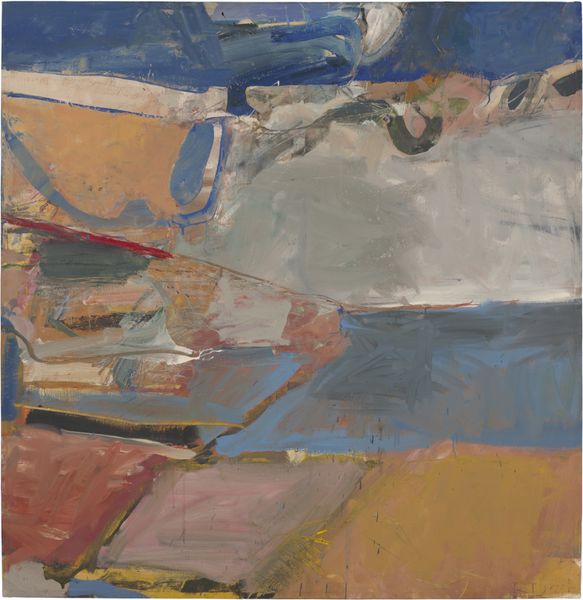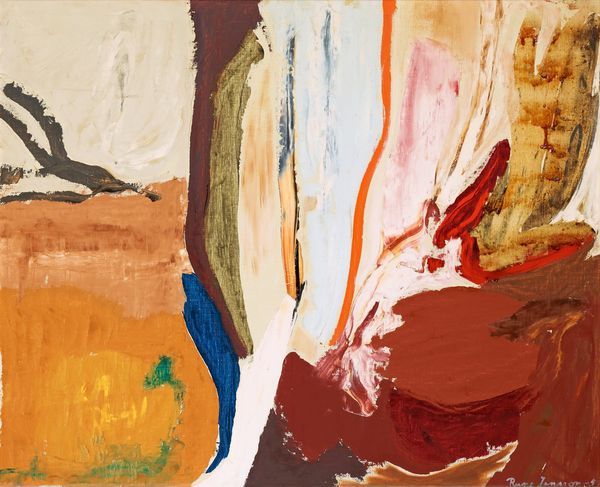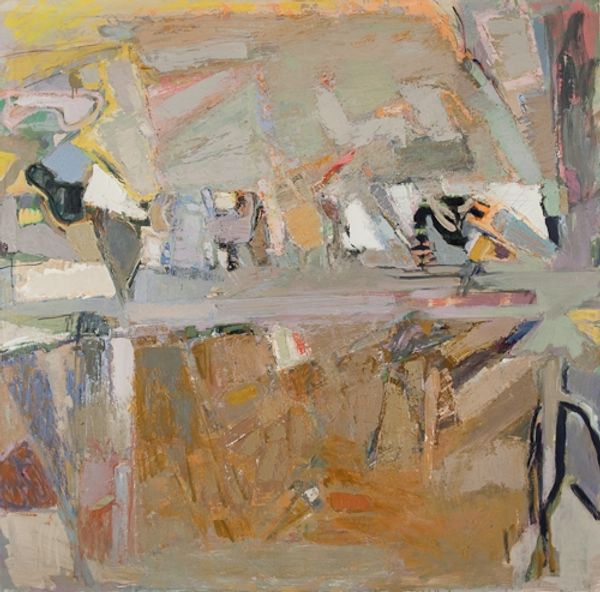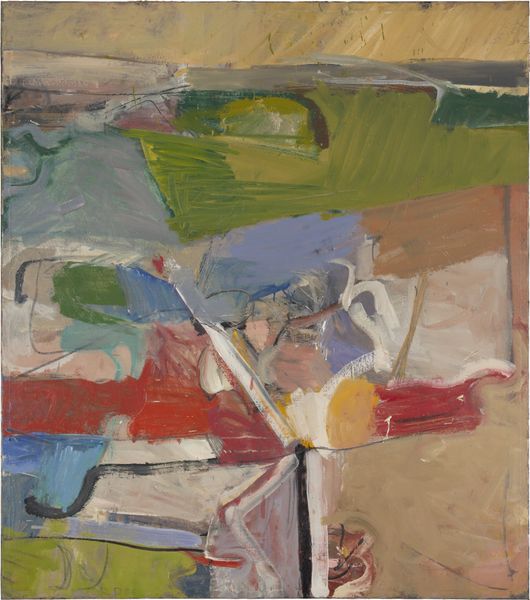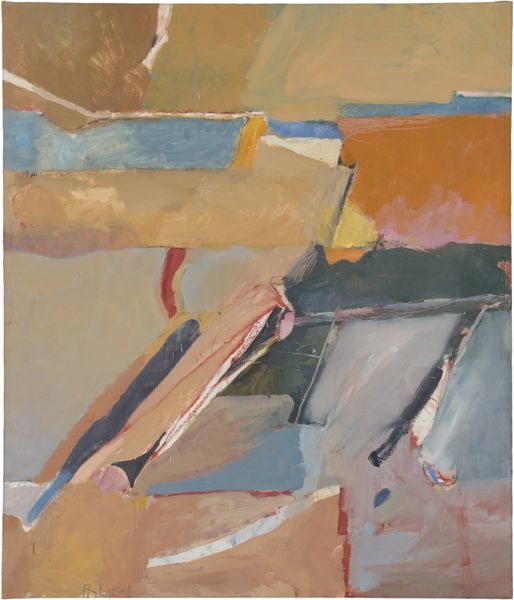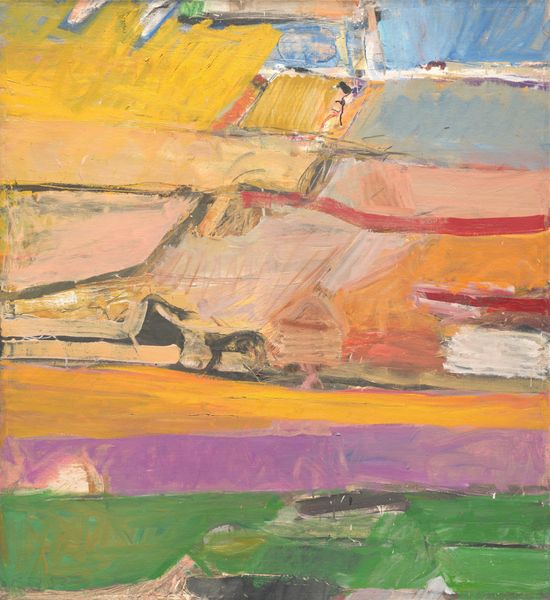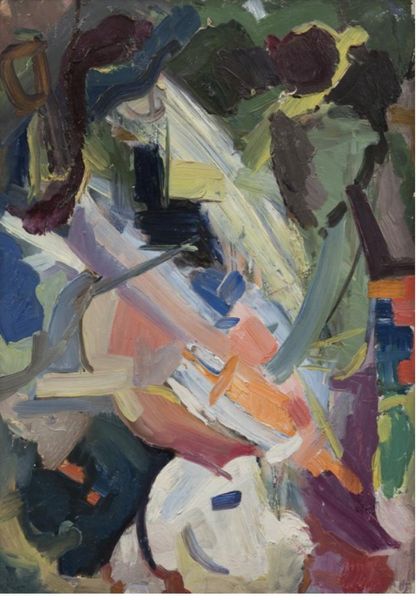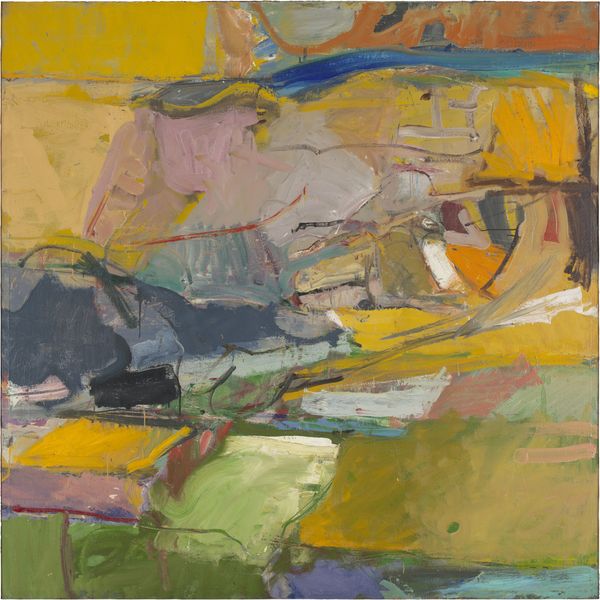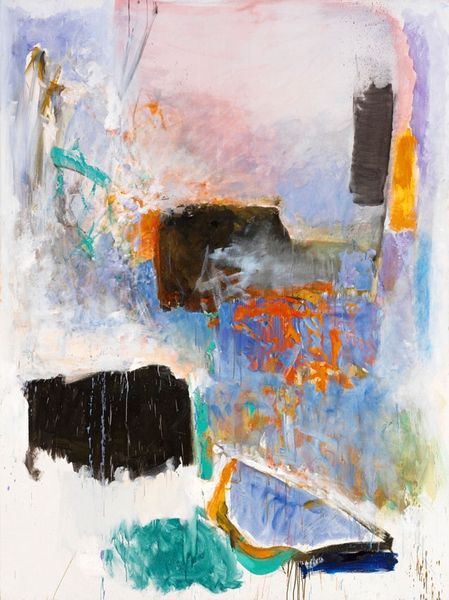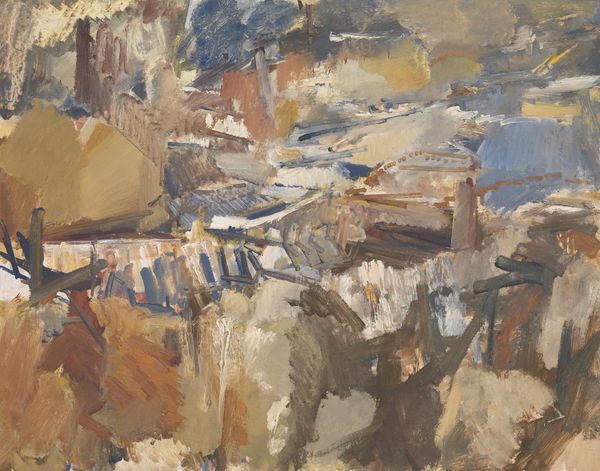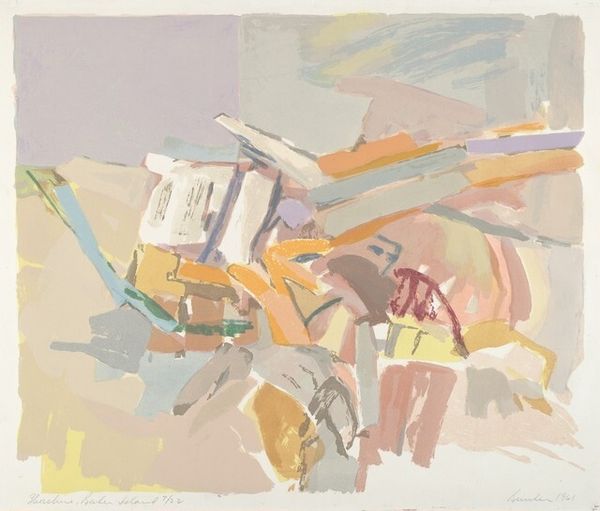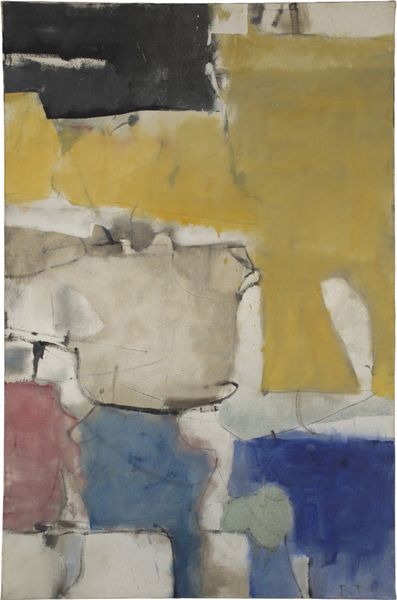
painting, oil-paint, impasto
#
abstract-expressionism
#
abstract painting
#
painting
#
oil-paint
#
abstract
#
oil painting
#
impasto
#
bay-area-figurative-movement
#
geometric-abstraction
#
matter-painting
Dimensions: 149.5 x 157.2 cm
Copyright: Richard Diebenkorn Foundation
Editor: This is Richard Diebenkorn’s "Berkeley #46" from 1955, an oil painting with a very tactile, almost impasto surface. It feels… calm, maybe? The colors are muted and the composition is fragmented, but balanced. How do you interpret this work? Curator: Immediately, I see a landscape. Though abstract, the horizontal bands suggest earth, sky, and water. Consider how landscapes have always held symbolic weight—they reflect not just physical space but our emotional and cultural relationship to the land. Editor: That makes sense, the colors feel very Californian. But the geometric shapes throw me off; it's not a straightforward landscape. Curator: Precisely. Diebenkorn, working during the height of Abstract Expressionism, filters the genre through the lens of geometric abstraction. Note how he uses color—ochre, grey, muted blues—these are the hues of memory, almost faded, dreamlike. What does that evoke? Editor: A sense of looking back, maybe? Like trying to recall a place that's familiar, but you can't quite grasp. Curator: Yes! And those heavy brushstrokes, the impasto you mentioned, speak to a physicality, a weightiness. The materiality itself becomes symbolic. How does that physicality contrast with the elusiveness of the memory? Editor: I see what you mean. It’s solid, but the image it creates is ephemeral. I hadn’t considered the material itself carrying meaning like that. Curator: Diebenkorn used that juxtaposition powerfully. I will certainly view landscapes in a museum setting through a completely different lens after this experience.
Comments
No comments
Be the first to comment and join the conversation on the ultimate creative platform.
